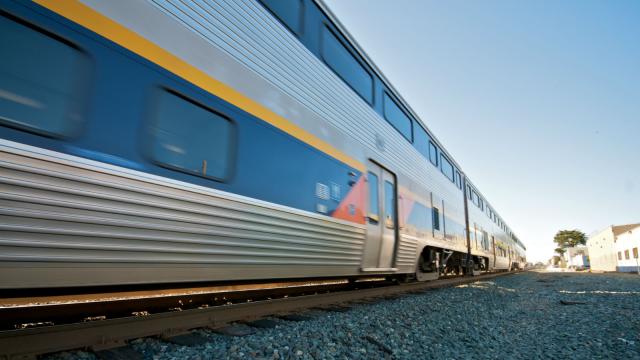Last week’s deadly commuter train derailment in the US was an undeniable tragedy. It’s also one that could potentially have been avoided regardless of human error. An automated train speed control system already exists, but neither US Congress nor the rail transportation industry has actually gotten around to installing it.
Known as Precision Train Control (PTC), this system tracks a train’s location via the Nationwide Differential Global Positioning System (NDGPS) and actively limits a vehicle’s speed depending on where it is on the line. That is, if the maximum safe speed on a curve is 50km/h, the PTC enforces that 50km/h limit (aka its “movement authority”) regardless of the conductor’s command input. What’s more, such a system could, in theory at least, drastically increase fuel efficiency while reducing wear and tear on the vehicles themselves.
But the PTC system is not without its drawbacks and critics. For one, nationwide installation across all Class I freight and passenger trains will cost anywhere from $US6 to $US22 billion dollars. Critics also question the technology’s reliability in densely populated and high-traffic areas (which of course can’t be proven until a large-scale roll-out is implemented) as well as the potential barriers of entry to future train companies. What’s more, as current mandates making their way through both the House and the Senate dictate since around 2008, the Federal Railroad Administration (FRA) has only one — very expensive — means of implementing the system: everything, all at once.
Plus, there’s still the question of where the billions of dollars in funding would come from. According to a 2009 FRA study, the total number of preventable accidents nationwide over the previous 21 years caused significantly less damage than what the PTC would cost to install — in all, 27 people died between 1987 and 2007. Basically, the study claimed that it was cheaper to clean up the potential destruction and mayhem caused by not having the system in place than it was to prevent them in the first place. An especially unfortunate claim, in light of the Metro-North tragedy.
The system’s not without its advocates, though. According to the US Rail Safety Improvement Act of 2008, which instigated the implementation of PTC and similar advanced signalling technology, it should have been installed by the end of 2010. Unfortunately, the Association of American Railroads, a special-interest group representing America’s largest freight companies, has successfully lobbied Congress to push the deadline back first to 2012, then to 2015, and now is pushing for a 2018 to 2020 goal — at the earliest. Per a recent US GAO report, many Class I railways won’t be able to install the system before 2015, while major commuter lines like the Metro-North and the Long Island Rail Road won’t be ready before the end of the decade. Only a handful of passenger companies including Amtrak, Metrolink in LA, and Philadelphia’s SEPTA and a couple of freighters will be ready by the end of 2015.
But last weekend’s Metro-North accident may have provided the impetus to get this legislation back on track. “According to experts at the National Transportation Safety Board (NTSB), a properly functioning Positive Train Control crash avoidance system would very likely have prevented the deadly Metro-North derailment on Sunday, regardless of whether the over-speed event was caused by mechanical failure or human error,” Sen. Dianne Feinstein wrote to Sen. Jay Rockefeller, chair of the Senate Commerce, Science and Transportation Committee last Thursday.
However, “other railroads in the United States have fallen behind schedule for deploying this vital safety technology, and they have encouraged Congress to amend Federal law in order to delay PTC crash avoidance system deployment,” Feinstein concluded. “Sunday’s crash was preventable.” Just maybe not, to the people making the decisions, $US6-$US22 billion worth of preventable. [Wiki – Next City – The Atlantic]
Picture: chuckstock
